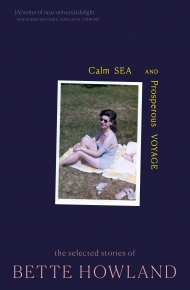Listen to This
• Tania James • October 1, 2013
When I moved into my current flat in Jangpura Extension, New Delhi, my landlady told me that her father-in-law had designed the neighborhood as a settlement for refugees from Pakistan, after Partition. I asked her who and what had been here before the 1950s. Her answer, more than once, was, “Nothing.”
But when, in Delhi, has there ever been nothing? It’s said that the city itself has gone through a number of reincarnations, as many as twenty-five or as few as seven. In City of Djinns, William Dalrymple flips back and forth through several of these Delhis, to the effect of those before-and-after books that display photos of familiar ruins, overlaid with transparencies that bring the ancient back to life: wrecked columns made whole, facades completed, statues releafed in gold. What City of Djinns also gives us is the sorts of hidden passageways for which Delhi is famous, trapdoors that drop us into the prison cell of the emperor Sh?h J?han, or Indira Gandhi’s garden on the morning of her death, or onto a rooftop of present-day pigeon fanciers.
I happened upon this book at just the right time during my seven-month stay, when I was starting to get a little too jaded by the traffic and constant construction, too ensconced in my daily routine. City of Djinns tapped a new well of curiosity, which is what all good travel books do, not by giving us the last word on any subject, but by sending us out to search for more.
One of Dalrymple's interests is twilight Delhi, the city as it was prior to Partition in 1947. In the case of this excerpt, Dalrymple takes us to Cobblers’ Bazaar to meet one of the last calligraphers in Delhi and his wayward younger brother. Shamim, the calligrapher, is one of the relatively few Muslims from that era who managed to stay in Old Delhi (unlike the many millions who were forced to move to Pakistan), and he voices an anxiety I've heard from other Delhiwallahs who remember the city as it was in the early half of the century—a whole culture is quietly slipping away. That loss seems particularly acute when considering the risks that Shamim, and others like him, must have taken to stay in Delhi. Sad as that story is, how stupendously awkward for a conservative Muslim calligrapher, maybe the last artisan of his kind, to have to share shop space with a brother who posts half-naked pinups in the doorway? I was drawn to this passage precisely because of that image, a kind of comic tug-of-war that seems to encapsulate a widespread tension.
P.S. Last week was the birth centenary of Saadat Hasan Manto. “Few names are more revered in the world of Urdu letters than that of Saadat Hasan Manto,” writes Matthew Reeck in the Focus Portfolio on the writer in APS 7. “Mythologized as a sort of enfant terrible and Romantic genius, he has been made a representative of the costs of the year 1947, the date of the South Asian subcontinent’s partition.” Read one of Manto’s stories here.
Copyright © William Hamilton-Dalrymple 1994
From City of Djinns by William Dalrymple, first published by Flamingo, an imprint of HarperCollins Publishers, 1994, reproduced by permission of the author c/o The Maggie Noach Literary Agency.
Back to Top
Author
Tania James is the author of the novel Atlas of Unknowns (Alfred A. Knopf) and a collection of stories, Aerogrammes, which will be published this spring by Knopf. She has received fellowships from the Fulbright Foundation and the DC Commission on the Arts and Humanities.
Categories
Archive
About
A Public Space is an independent, non-profit publisher of the award-winning literary and arts magazine; and A Public Space Books. Since 2006, under the direction of founding editor Brigid Hughes the mission of A Public Space has been to seek out and support overlooked and unclassifiable work.
Featured Title

"A ferocious sense of engagement... and a glowing heart." —Wall Street Journal
Current Issue

Subscribe
A one-year subscription to the magazine includes three print issues of the magazine; access to digital editions and the online archive; and membership in a vibrant community of readers and writers.
Newsletter
Get the latest updates from A Public Space.
